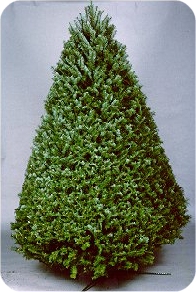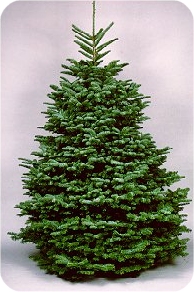
Oregon Douglas Fir
These soft needles are dark green to blue green in color and are approximately 1 to 1 ½ in. in length. Douglas-fir needles radiate in all directions from the branch. When crushed, these needles have a sweet fragrance. They are one of the top major Christmas tree species in the U.S. | 
Oregon Noble Fir
These needles turn upward, exposing the lower branches. Known for its beauty, the noble fir has a long keepability, and its stiff branches make it a good tree for heavy ornaments, as well as providing excellent greenery for wreaths and garland. |